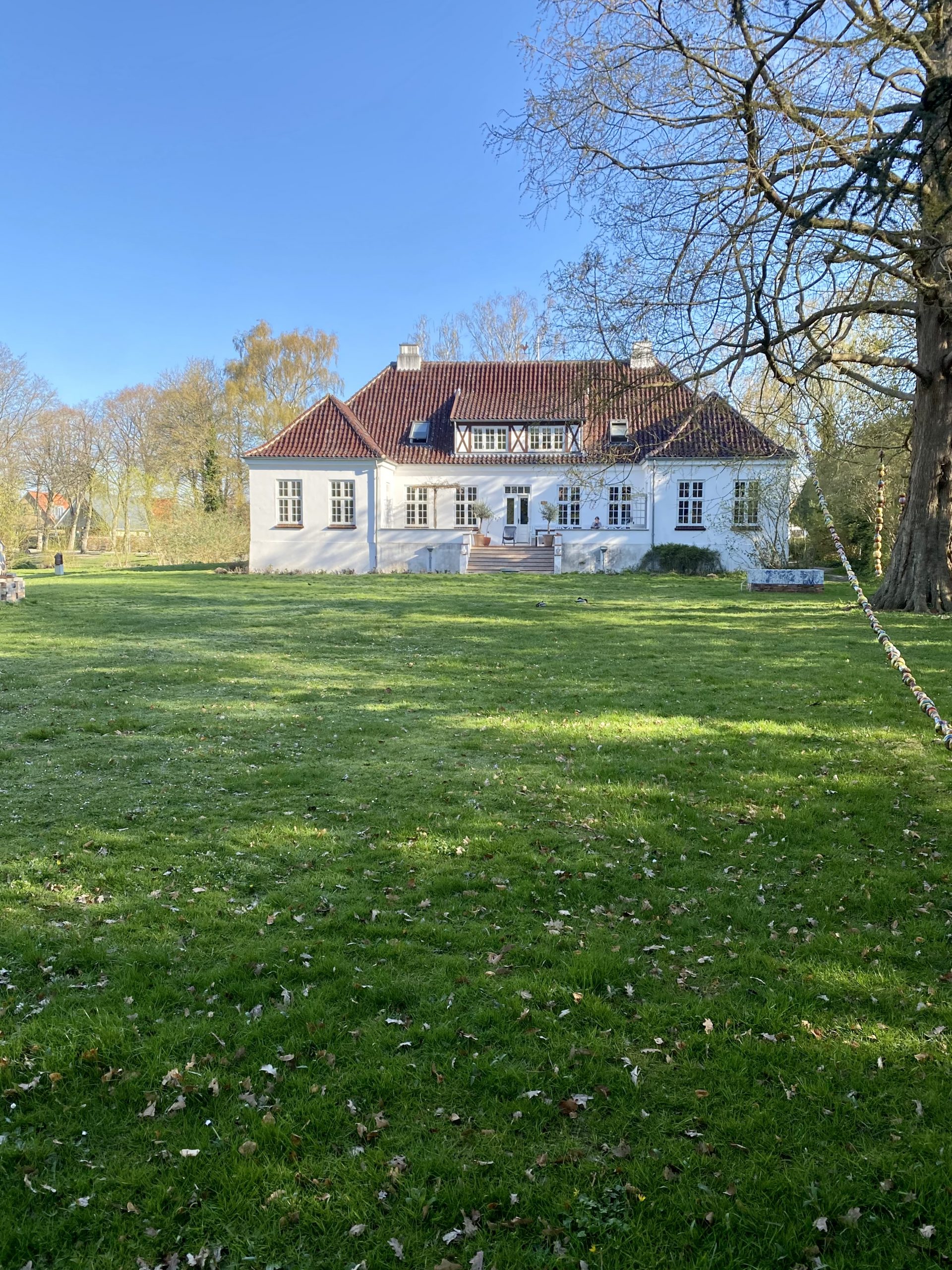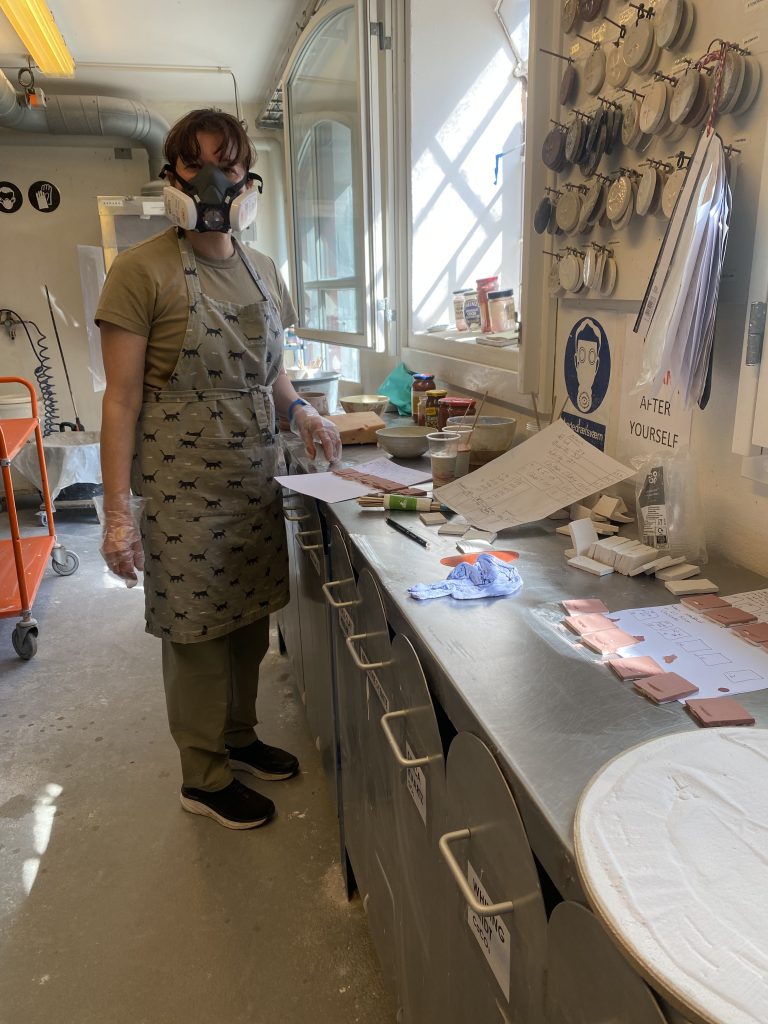
I have really enjoyed my month at Guldagergaard. In my final weeks I fired the Speedy soda kiln again and took part in firing the anagama. This was a three day firing where we each took a six hour shift. My shift was 6am to 12 noon on the final day. We stoked the kiln every time the temperature started to drop. The front of the kiln near the firebox was much hotter than the back of the kiln, so we tried holding the temperature steady for several hours to bring the back up to temperature. By around 2 am the firing team eventually got the back to cone 9 and the front to cone 11 and sealed up the kiln. After that, we kept the kiln in reduction by stoking with a few sticks of wood every 15 minutes until the following afternoon. The cooling took around five days and we couldn’t unpack the kin until minutes before I had to leave to catch my flight back to London. I’m looking forward to seeing the results.

I took some photos of my finished pieces outside the studio at Guldagergaard. These pieces were inspired by the lichens growing on trees and rocks around the studio. Guldagergaard means Gold Acre Farm and it used to be an apple orchard before becoming the International Centre for Ceramic Research. These pieces were fired in the Bourry box train kiln and the Speedy soda kiln. The large pieces are made from Scandinavian stoneware and the smallest pieces are English porcelain.

















